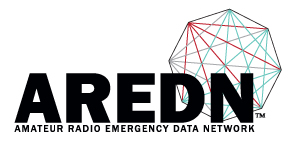I think this has been brought up before and I'm checking again. Is there a way to limit the number of nodes that can connect to a given node? Some of our hill top nodes can see basically all the other nodes regardless of signal level. There are upwards of 20 neighbors connected to one node. Running ping plotter the router constantly changes and creates high latency on the network.
-Chad
You are here
Blocking certain nodes or node threshold
Mon, 01/23/2017 - 15:21
#1
Blocking certain nodes or node threshold
Theme by Danetsoft and Danang Probo Sayekti inspired by Maksimer


I can see by limiting the number of routing choices by blocking certain clients from advertising on the olsr info port could be effective. Especially when you have several neighbor nodes, most with marginal signals.
why not use a second band like 5ghz to provide rib cage links work to improve link topogracfy and prevent shadowed transmitter noise from wide area coverage on one ch? .
Our network is all 2.4Ghz that's just how it evolved. All Ubiquiti M2 gear (Channel -2 10Mhz ). We are in a valley (Yakima Valley) with nodes on a couple hill tops and within the city. About 40 nodes including some in adjacent valleys. There is also a tunnel with two clients. The nodes on the hill tops were getting heavily saturated, to the point the large groups of neighbors would just drop about once a minute, then come back. We aded a 2nd SSID (using BroadbandHamnet and AREDN) with a few DTD nodes passing traffic between. This hasn't solved all our problems but things have improved somewhat. 73
The other issue is that when you say "Groups of neighbors would drop" if they are on the further fringes they could be having the issues that everyone else is contending with RF and beating them out, again same issue, segmentation (choose a different hilltop node to point to) or it could just be they are far away and have too weak a signal.
Between your hilltop nodes you definitely should have a 5ghz or 3ghz backbone in place with the environment your describing. The hilltops feed the valleys (general access) and the backbone feeds major coverage area to major coverage area. The backbone should be tweaked to provide services to just the high level nodes (keep users off these links) which will allow you to jump over large swatches of contention. Right now if you want to go from one local user to a remote local user you may be going "sender->hilltop->different ground user->another ground user->hilltop->destination" something similar, that is a lot of contention on a single channel (each user packet getting sent multiple times probably in a high collision environment).
Generally its ok for the User Access Layer to be fairy adhoced, but the major infrastructure in an area should be coordinated and planned. Have the major players work together to feed out to each other and create a controlled high speed system to take the load off the access layer. You want your hilltop nodes to have high qualty designed paths that never require them to go the user access level until its ready to be dropped out closest to the destination (the user access layer acts as a redundancy in a disaster should one link of the backbone fail, but it shouldn't be the primary designed transit layer)
I would give the following videos a bit of a look for design ideas:
http://www.aredn.org/content/announcing-aredn-amateur-radio-emergency-da...
http://www.aredn.org/content/aredn-ham-com-kg6jei-presentation-video
Were are starting to use some 5ghz radios and plan to replace the nodes on the alternate ssid. It's not very organized at the moment and constantly changing. I appreciate your suggestions and we are hoping to climb some hills once the snow melts. 73